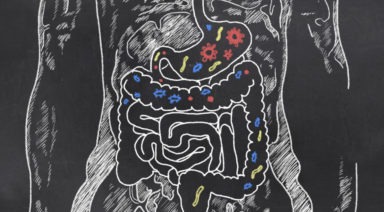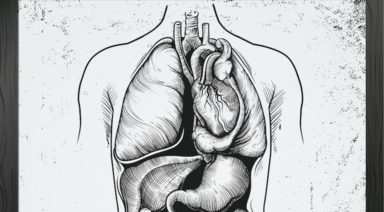5 Warning Signs of Chronic Stress You Can’t Afford to Ignore

Stress is fine in small doses–in fact, it’s a natural and necessary hormonal response that encourages your body and mind to activate appropriately when required. We can avoid danger, perform at a high level, maintain sharp focus, and react swiftly to urgent situations all thanks to our quick-acting stress response system.
When functioning normally, the stress response shuts down or “deactivates” automatically. For example, you might be anxious about giving a presentation at work; once it’s over, however, your worries vanish. Your heart may pound before competing in a road race; after crossing the finish line you are quickly able to unwind. If you run a stop sign, it might take a bit of driving before you stop sweating, but you’ll be happily singing to the radio just a few blocks later.
These are examples of how short-term functional stress can help us with performance, attention and safety. Chronic stress is different; it builds up slowly over time. What happens is this: stress hormones (adrenaline and cortisol) are released, over and over again, in non-threatening situations or by a series of inappropriate triggers. When your autonomic nervous system is activated continuously or repeatedly by “false alarms,” it forgets how and when to turn itself off. A body overloaded with adrenaline and cortisol is a body suffering from chronic stress.
Watch this full length doc, Stressed, exploring emotional stress and its undeniable impact on humanity
Chronic stressors can be obvious–traumatic events, worrisome thoughts, long-term illness–but stress might also sneak up on you in subtle, more indirect ways. Imagine someone holding a water balloon over your head as you try to fall asleep. Can you relax or get comfortable? Of course not! What if the balloon were held over your head every night for a whole week? You might never get to sleep–even when the balloon is removed it could take days before you are able to let the go of the fear of being soaked. Although the threat is gone, your body responds as if the threat is still impending–that’s the nature of chronic stress.
Continual cell phone interruptions, inconsolable babies crying, anger-infused environments, lingering financial woes, challenging interpersonal relationships, background noise–you name it–if it’s regularly bothering you, there is a good chance it’s causing you some degree of chronic stress. Living on high alert? It’s time to pay attention to the warning signs. Here are five general ways stress-related symptoms can manifest, and some examples of each:
Sleep Disturbances or Agitation:
- Insomnia or not sleeping well
- Can’t get comfortable
- Tossing and turning
- Disturbing dreams
- Trouble falling asleep
- Frequent waking
- Chronic fatigue
- Over-agitation during the day
Health or Physical Problems:
- Getting sick frequently
- Unable to shake the cold or flu
- Compromised immune system
- Chronic symptoms or illness flare up
- Unexplained headache, stomachache or chest pains
- Tight muscles
- Muscle soreness or cramping
- Diminished sex drive
Emotional Symptoms or Changes in Mood:
- Lack of energy
- Getting overwhelmed
- Pessimism or hopelessness
- Feeling isolated or detached
- Anxiety
- Easily upset or crying uncontrollably
- Loss of enjoyment
- Unwarranted anger and irritability
- Depression or feelings of worthlessness
Increase in Addictive Behaviors:
- Overeating
- Undereating
- Poor judgment
- Increase in alcohol, tobacco, or drug use
- Grinding teeth
- Biting nails
Trouble Thinking or Concentrating:
- Obsessive thoughts
- Concentration issues
- Disorganization
- Debilitating anxiety
- Avoidance behaviors
- Feeling like you are losing control
- Forgetfulness
The more symptoms you are having, the higher your chronic stress level might be. Check-in to see what stressors are troubling you at home or work; assess any health, financial, emotional or spiritual concerns, too. If the “low gas” warning light illuminates while you’re cruising down the highway, don’t keep going! It’s an important signal–stop and fill up the tank before you run out of gas. Similarly, if the “chronic stress” warning signs are flashing–get off the stress highway–see a doctor, consult with a therapist, learn relaxation techniques or talk to a friend. Get your stress response system back online; it’s too important to ignore.
Study Finds Significant PTSD Relief Through Lucid Dreaming

A groundbreaking new study of lucid dreaming suggests that people can heal psychological trauma while they’re asleep, and may even show potential for healing on the physical level.
A lucid dream is one in which you’re actively aware that you’re dreaming and may even have some control over what happens. While scientists have been studying this fascinating phenomenon for decades, recent research focus has shifted to the potential for healing within this state.
Charlie Morley has taught thousands of people worldwide how to lucid dream and was involved in the most recent study of lucid dream healing conducted by the Institute of Noetic Sciences (IONS).
“Lucid dreaming is like being conscious within the unconscious mind, so there’s a whole host of healing benefits that we can gain from lucid dreaming,” Morley said. “In fact, many of the things you can treat through hypnotherapy, you can also treat through lucid dreaming. Now, there are some very interesting studies and preliminary research that points to lucid dreaming being one of the most powerful interventions for people with nightmares and especially PTSD-triggered nightmares.”
In the IONS study, a group of 49 people with diagnosed Post-Traumatic Stress Disorder were given instruction by Charlie into lucid dreaming. Over the course of one week, they were taught various induction techniques with a specific emphasis on making a dream plan for healing.
“So the techniques that we used for this study started with the basics — keeping a dream diary, learning to check dreams signs, reality checking during the day, all of your classic lucid dreaming techniques — but what we placed a lot of emphasis on was the dream plan; planning what you want to do in your first or next dream,” Morley said.
“If I were to become lucid within those recurring nightmares, what could I actually do to help affect healing? What we discovered was that simply by becoming lucid in a recurring PTSD nightmare, that already had a healing response, because it’s like ‘Oh, wow, I’m not really back in Iraq, I’m simply dreaming I’m back in Iraq.’ But once we trained people, not only to get lucid and know that they’re dreaming but to then intentionally interact with the source of their fear, or the source of their trauma, or the thing that they’ve been running from in their nightmares, to actually turn and face it had a really powerful healing response. We had some really good data that we gathered from that.”




































